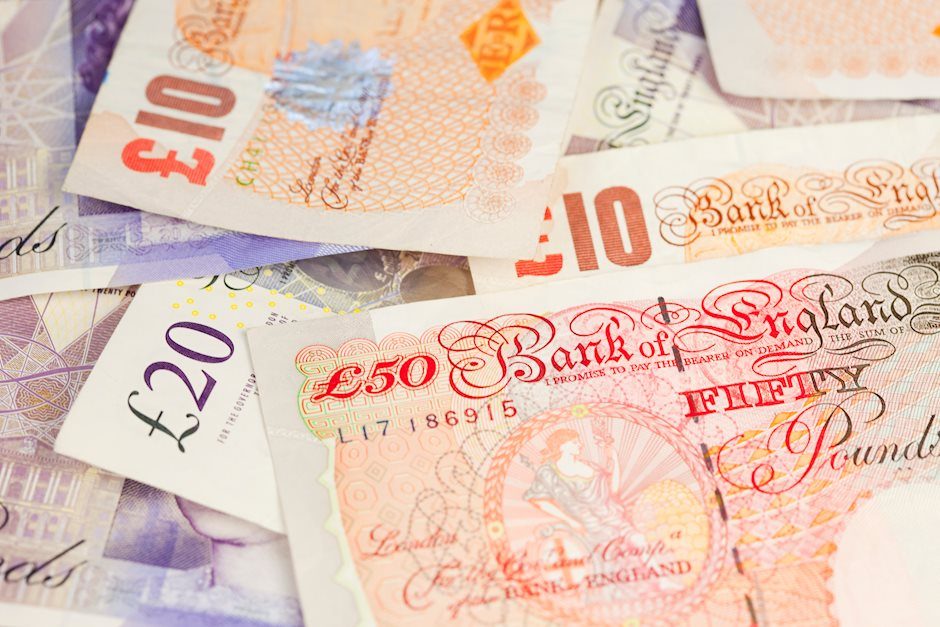GBP/USD remains below 1.3300 as risk aversion grows due to rising geopolitical tensions
- GBP/USD faces challenges due to rising risk-aversion sentiment amid escalating Middle East conflict.
- Iran launched over 200 ballistic missiles at Israel and warned that any counterstrike would lead to "vast destruction."
- BoE’s Greene indicated that additional interest rate cuts are likely since prices are "moving in the right direction."

GBP/USD remains tepid following the losses registered in the previous session, trading around 1.3280 during the Asian hours on Wednesday. This downside could be attributed to the risk aversion due to the rising geopolitical tensions in the Middle East, which undermines the risk-sensitive Pound Sterling (GBP) and GBP/USD pair.
Iran launched over 200 ballistic missiles at Israel on Tuesday, shortly after the US had warned that a strike was imminent. The Israel Defense Forces reported that several of the missiles were intercepted, while reports indicated that one person was killed in the West Bank, according to Bloomberg.
Israeli Prime Minister Benjamin Netanyahu vowed to retaliate against Iran following a missile attack on Tuesday. In response, Tehran warned that any counterstrike would lead to "vast destruction," raising concerns about the potential for a broader conflict.
The US Dollar (USD) receives support from the latest speech by the Federal Reserve (Fed) Chairman Jerome Powell. Powell said that the central bank will gradually lower its interest rate over time. Fed Chair Powell added that the recent half-point interest rate cut should not be seen as an indication of similarly aggressive future actions, noting that upcoming rate changes are likely to be more modest.
On Tuesday, Bank of England (BoE) policymaker Megan Greene warned that a consumption-driven recovery in the United Kingdom (UK) could trigger a new wave of inflation. However, Greene noted that further interest rate cuts are likely as prices are "moving in the right direction," according to Bloomberg.
BoE policymaker Greene also stated that she believed the neutral interest rate had increased since the inflation shock. While most estimates suggest that the neutral rate for the Bank of England is around 3.5%, Greene did not provide a specific figure. The neutral rate refers to the level at which a central bank's policy neither stimulates nor constrains economic growth.
Traders are expected to pay close attention to the upcoming US ADP Employment Change report and comments from Federal Reserve officials on Wednesday for additional guidance. On the UK’s dock, the Bank of England’s Monetary Policy Report Hearings will be closely monitored on Thursday.
Pound Sterling FAQs
The Pound Sterling (GBP) is the oldest currency in the world (886 AD) and the official currency of the United Kingdom. It is the fourth most traded unit for foreign exchange (FX) in the world, accounting for 12% of all transactions, averaging $630 billion a day, according to 2022 data. Its key trading pairs are GBP/USD, also known as ‘Cable’, which accounts for 11% of FX, GBP/JPY, or the ‘Dragon’ as it is known by traders (3%), and EUR/GBP (2%). The Pound Sterling is issued by the Bank of England (BoE).
The single most important factor influencing the value of the Pound Sterling is monetary policy decided by the Bank of England. The BoE bases its decisions on whether it has achieved its primary goal of “price stability” – a steady inflation rate of around 2%. Its primary tool for achieving this is the adjustment of interest rates. When inflation is too high, the BoE will try to rein it in by raising interest rates, making it more expensive for people and businesses to access credit. This is generally positive for GBP, as higher interest rates make the UK a more attractive place for global investors to park their money. When inflation falls too low it is a sign economic growth is slowing. In this scenario, the BoE will consider lowering interest rates to cheapen credit so businesses will borrow more to invest in growth-generating projects.
Data releases gauge the health of the economy and can impact the value of the Pound Sterling. Indicators such as GDP, Manufacturing and Services PMIs, and employment can all influence the direction of the GBP. A strong economy is good for Sterling. Not only does it attract more foreign investment but it may encourage the BoE to put up interest rates, which will directly strengthen GBP. Otherwise, if economic data is weak, the Pound Sterling is likely to fall.
Another significant data release for the Pound Sterling is the Trade Balance. This indicator measures the difference between what a country earns from its exports and what it spends on imports over a given period. If a country produces highly sought-after exports, its currency will benefit purely from the extra demand created from foreign buyers seeking to purchase these goods. Therefore, a positive net Trade Balance strengthens a currency and vice versa for a negative balance.
Author

Akhtar Faruqui
FXStreet
Akhtar Faruqui is a Forex Analyst based in New Delhi, India. With a keen eye for market trends and a passion for dissecting complex financial dynamics, he is dedicated to delivering accurate and insightful Forex news and analysis.

















